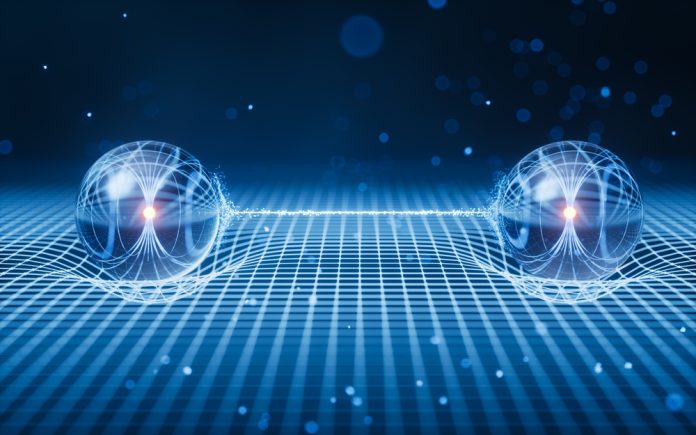Recent breakthroughs in quantum research have allowed scientists to explore quantum entanglement in unprecedented detail, shedding new light on how these instantaneous phenomena evolve over incredibly short time scales.
Researchers from TU Wien (Vienna) and China have developed advanced computer simulations that reveal how quantum entanglement occurs within attoseconds — a unit of time so short that it is almost beyond human comprehension.
The results offer fascinating insights into the temporal development of these quantum events, once thought to be instantaneous.
What is quantum entanglement?
Quantum entanglement is a phenomenon where two particles become interconnected in such a way that the state of one particle is dependent on the state of the other, regardless of the distance separating them.
Traditionally, quantum entanglement has been viewed as an instantaneous effect that occurs as soon as two particles interact. However, recent research has shown that this process actually unfolds over incredibly short time intervals, challenging our understanding of time in the quantum realm.
The collaborative research from TU Wien and their Chinese counterparts focuses on the microscopic details of how quantum entanglement forms.
Their simulations allow scientists to investigate the timeline of these ultrafast processes, measuring them in attoseconds — a billionth of a billionth of a second.
A deeper dive into ultrafast quantum events
In their experiments, researchers exposed atoms to an intense and high-frequency laser pulse, which caused one electron to be ejected from the atom.
Depending on the strength of the laser, a second electron within the atom could also be excited to a higher energy state, altering its orbit around the nucleus.
What intrigued the scientists was the realisation that after the laser pulse, the two electrons—one flying away and the other remaining within the atom—became quantum entangled.
Even though they were now in completely different locations, their states remained interdependent. Studying the two electrons together, rather than individually, allowed the researchers to uncover significant details about their entangled properties.
The birth of an electron
A particularly groundbreaking aspect of the research was the discovery that the exact moment the ejected electron ‘left’ the atom is not a fixed event.
Instead, the electron exists in a quantum superposition, meaning it behaves as though it left the atom at multiple points in time. This phenomenon directly ties the ‘birth time’ of the ejected electron to the state of the electron that remains bound to the atom.
The researchers used a sophisticated measurement protocol involving two laser beams to study this temporal relationship. It was revealed that when the remaining electron occupies a higher energy state, the ejected electron is more likely to have been released earlier.
Conversely, if the remaining electron is in a lower energy state, the ejected electron likely left the atom later—on average, 232 attoseconds later.
These temporal differences, although minuscule, can be both calculated and measured experimentally, representing a significant step forward in quantum physics.
Quantum entanglement beyond instantaneous effects
The findings from this study highlight an important shift in the way scientists understand quantum entanglement.
Instead of viewing these quantum events as happening instantaneously, researchers now recognise that they occur over defined, albeit extraordinarily short, time intervals.
This temporal resolution opens up new opportunities to explore the fundamental workings of quantum physics, offering deeper insights into how quantum systems develop over time.
Additionally, understanding the timing of quantum entanglement has profound implications for practical applications, such as quantum computing and quantum cryptography.
These technologies rely on the manipulation of entangled particles, and being able to control and measure entanglement on such brief time scales could enhance their efficiency and reliability.
These new insights demonstrate that even in the world of quantum physics, time plays a crucial role in shaping the outcomes of some of nature’s most mysterious events.









